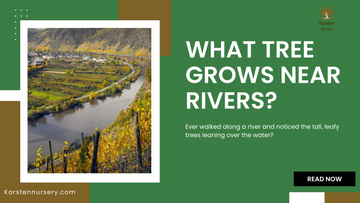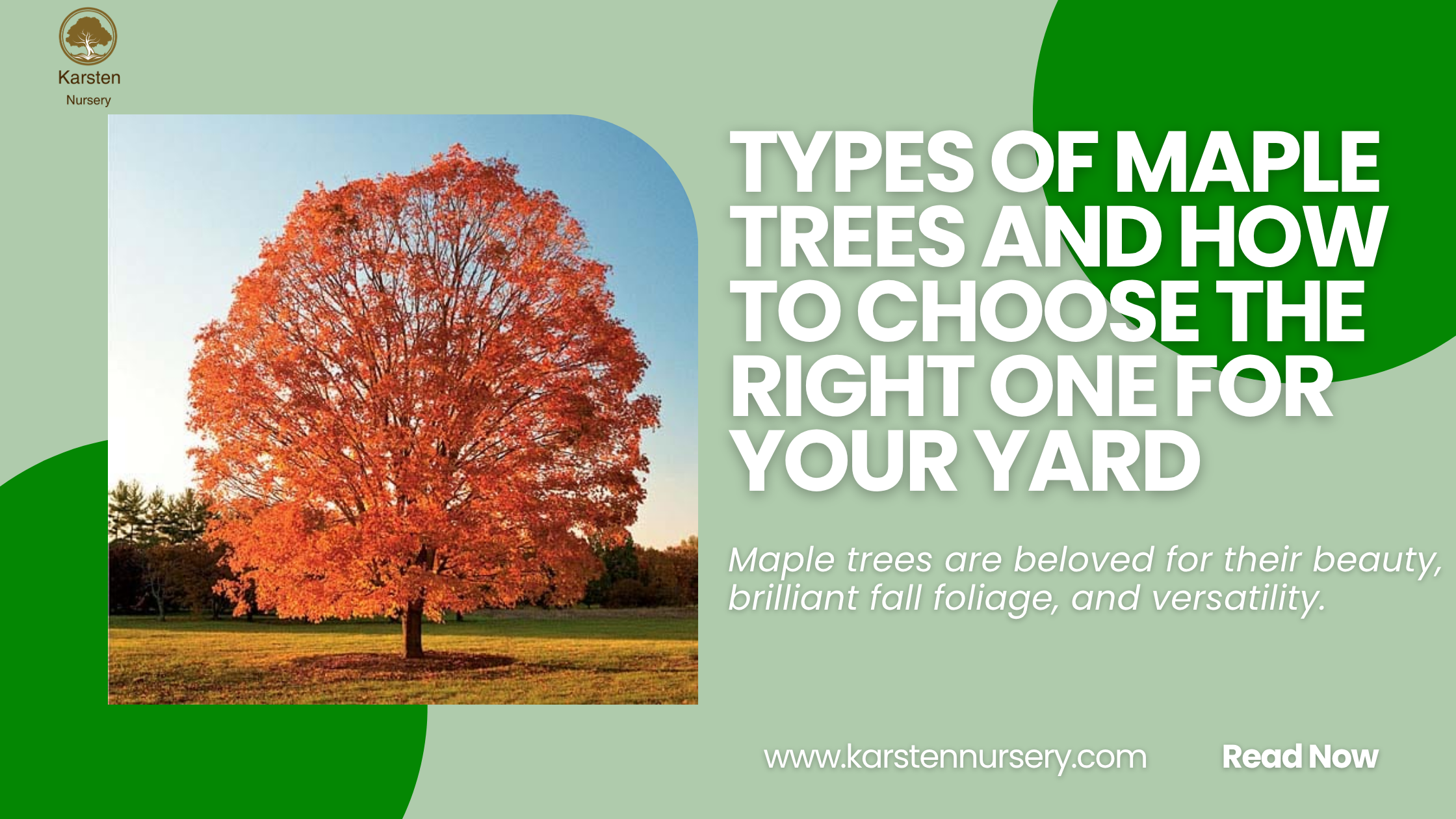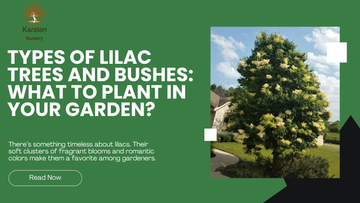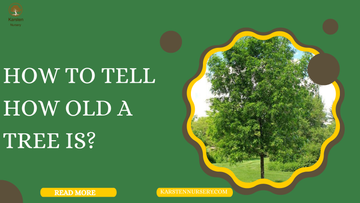
Ever walked along a river and noticed the tall, leafy trees leaning over the water? These trees aren't there by chance—they're nature’s way of keeping riverbanks strong and ecosystems balanced.
Some trees love the damp soil and flowing water, growing their roots deep into the ground to stay steady. In this guide, we’ll look at what kinds of trees grow near rivers and why they play such an important role in keeping rivers healthy and beautiful.
What Trees are Best for Planting Near Rivers?
Planting the right tree near a river means finding one that can thrive in moist soil and occasional flooding. These trees offer beauty, habitat for animals, and protection for the land.
Among the fast growing trees, willow, sycamore, and cottonwood are top choices. They’re reliable and built to survive riverbank conditions.
Quick-Specs Box: Ideal Riverbank Trees
-
Willow Tree: Grows up to 40–60 feet. Loves wet soil. Spreads wide.
-
Sycamore Tree: Up to 100 feet tall. Tolerates flooding. Massive shade.
-
Cottonwood: Grows fast—up to 6 feet per year. Thrives in moist zones.
-
River Birch: Beautiful bark. Handles wet, acidic soils. Grows 40–70 feet.
-
Alder: Nitrogen-fixer. Great for stream edges. 30–50 feet tall.
These trees don’t just grow—they flourish in wet areas, offering aesthetic and ecological benefits.
Types of Trees That Grow Well by Water
You’ll find certain species that absolutely love being near water. They’ve evolved to handle everything from soggy soil to seasonal floods.
Trees and types to watch for include:
-
Bald Cypress – These fast-growing evergreen trees tolerate swampy ground and standing water.
-
Box Elder – Often found along rivers, this maple species grows quickly and stabilizes soil.
-
Red Maple – Thrives in damp forests and river valleys. It has brilliant fall colors.
A fast-growing tree is a real asset near water—especially when you want quick results for shade, erosion control, or privacy.
Trees That Help Prevent Riverbank Erosion
Riverbank erosion is a real concern, especially during heavy rains. But guess what? The tree act like natural armor.
Root structure is key. Trees like willows and alders have expansive root systems that hold soil together. This prevents it from washing away during floods or storms.
Trees planted by rivers of water are often chosen for this very reason. They serve as living buffers between the land and the flowing water.
Examples:
-
Willow Trees – Flexible and fast-growing, they “knit” the soil together.
-
Black Alder – Adds nitrogen to the soil while holding banks firm.
-
Red Osier Dogwood – Shrub-like tree with strong root systems perfect for stream stabilization.
Also Read: What Do Trees Do in Autumn Riddle?
Can you Plant Trees Near a Stream?
 Absolutely, you should plant trees near a stream. Trees offer natural shade, reduce evaporation, and support a thriving ecosystem for fish and aquatic insects. Plus, a growing tree creates visual appeal and privacy.
Absolutely, you should plant trees near a stream. Trees offer natural shade, reduce evaporation, and support a thriving ecosystem for fish and aquatic insects. Plus, a growing tree creates visual appeal and privacy.
When choosing what tree grows near rivers or streams, focus on native species that are already adapted to your region's climate and hydrology. Just remember: Avoid planting invasive species or those with shallow roots that might not hold up during a storm.
Trees That Survive Flooding Near Rivers
Some fast-growing trees have evolved to handle seasonal or unexpected flooding. They may even prefer it.
Trees that tolerate wet roots and temporary submersion include:
-
Swamp White Oak – Adapted to saturated soils and short-term flooding.
-
Bald Cypress – Loves standing water. Often found in swamps and lowlands.
-
Silver Maple – Fast-growing and flood-tolerant. Bonus: great shade.
These trees provide both structure and resilience in flood-prone areas. That’s why they’re often used in riparian restoration projects.
Best Native Trees for River Edges
Native trees are usually the best bet—they're already used to the climate and local conditions. Native species are not only low-maintenance but also critical to supporting local wildlife and pollinators. They offer food, shelter, and nesting opportunities.
Some solid native picks:
-
Eastern Cottonwood (East/Central U.S.)
-
Western Red Cedar (Pacific Northwest)
-
Red Maple (East/Northeast)
-
Box Elder (Throughout the U.S.)
-
River Birch (Southeastern U.S.)
You’ll also find the phrase tree planted by the rivers of water used in historical or biblical contexts, referring to how these trees represent strength and endurance.
Which trees grow in wet soil near rivers?
Wet soil can be a challenge for many plants—but not for riparian trees. These trees are adapted to grow in heavy, saturated soils where oxygen is limited. Their root systems are shallow but wide-spreading, perfect for soggy banks.
Try:
-
Black Willow
-
Sweetgum
-
Green Ash
-
River Birch
If you’re wondering which trees grow in wet soil near rivers, these are top-tier. Spoiler alert: they’re also among the most beautiful.
Are willow trees good for riverbanks?
Yes—willow trees are not just good, they’re exceptional for riverbanks. They grow quickly, adapt well to wet conditions, and have extensive root systems that help with erosion control.
You'll find different types like the Weeping Willow, Black Willow, and Pussy Willow used along rivers, lakes, and even urban water channels.
As a bonus, they’re also great fast growing shade trees, providing wide canopy cover within just a few years.
Do sycamore trees grow near water?

Yes, sycamore trees are river giants. You’ll often see their mottled bark and towering trunks lining creeks and rivers across the U.S. They thrive in lowlands and floodplains, soaking up all the moisture they can get.
They’re considered some of the best fast-growing shade trees out there. And their deep roots help anchor the soil, making them ideal for erosion-prone areas.
Sycamores can grow to over 100 feet tall and live for hundreds of years. Talk about commitment.
Final Thoughts: Choosing the Right Tree for River Areas
From the dependable willow to the towering sycamore, there are plenty of fast-growing, beautiful trees ready to thrive near water. Just be sure to choose species that suit your region’s climate, the specific soil type, and the purpose—whether it’s shade, erosion control, or pure visual impact.
Why wait 30 years for shade and wind protection when Karsten Nursery’s Hybrid SuperTrees can deliver it in just a few? These fast-growing trees create a natural barrier against wind, snow, dust, noise, and unwanted views—quickly and effectively.
Shop now from us and grow smarter!
FAQs:
Q1: What kind of trees and plants grow around a river?
A1: Riversides often support riparian vegetation, which includes moisture-loving trees, shrubs, grasses, and herbaceous plants. Common examples include Willows (Salix spp.), Cottonwoods (Populus spp.) and many more.
Q2: What is a tree planted by the rivers of water?
A2: It symbolizes a person who thrives spiritually, like a tree with constant access to life-giving water. In nature, it refers to deeply rooted trees that flourish near a reliable source of water.
Q3: What grows next to rivers?
A3: Alongside rivers, you'll commonly find: Trees like willows, cottonwoods, and sycamores, Shrubs such as dogwoods and elderberries and Aquatic and semi-aquatic plants like cattails, sedges, ferns, and mosses.
Q4: What tree frequently grows along streams?
A4: The willow tree (Salix spp.) is one of the most frequently found trees along streams. Willows grow quickly, tolerate waterlogged soils, and are excellent for erosion control.
Read more relevant blogs as well. Types of Maple Trees and How to Choose the Right One for Your Yard
Types of Maple Trees and How to Choose the Right One for Your Yard




